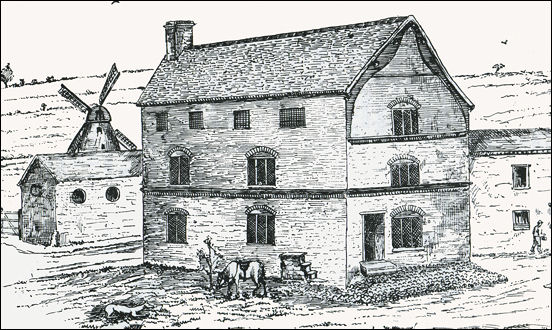|
Tunstall,
Stoke-on-Trent, Staffordshire.
|
The Manor of Tunstall:
Tunstall Manor, also called Tunstall Court from
the 16th century, covered an area which extended to the Cheshire
border and included the following townships: Tunstall. Chell,
Oldcott. Ravenscliffe. Chatterley, Brieryhurst, Stadmorslow,
Thursfield and Wedgwood in the parish of Wolstanton; Burslem and
Sneyd in the parish of Burslem; and Bemersley in the parish of
Norton-in-the-Moors.
In 1576 Ralph Sneyd of Keele Hall bought
two-thirds of the manor from the Audley family for £1,200. The
remaining one third passed through various hands until it too was
acquired by the Sneyd family in 1787.
Courts were being held for the manor by 1274.
Until the 16th century the manor courts were always held at Tunstall
but after the mid 16th century they were held elsewhere in the
manor. By the mid 18th century they were always held in Burslem
probably at the alehouse known as the Court House.
The original Tunstall court house stood in Cross
Street (now Oldcourt Street) until it was demolished in 1888.
Many of the functions of the manor court were
taken over by new forms of local government developed in the 19th
century. However the manor court was still held in 1917 and some
aspects of its work survived to the beginning of the 20th
century......
.....for example the court was
responsible for the upkeep of the pinfold for the impounding of
stray animals and the appointment of the pinner. In 1782 the
pinfold was situated at the junction of Furlong Lane and the road
north from Tunstall to Lawton.
By 1839 it had been moved to the west end of Clayhills Road where
it still stood in 1878. In the 1830s the pinner for Tunstall manor
was chosen at the court leet on the nomination of the chief
inhabitants.
Andrew Dobraszczyc's notes

The Old Court Leet in Cross Street,
Tunstall
[drawn from a photograph by William Scarratt]
The illustration of
the "Old Court Leet" is taken from William Scarratt's, Old Times in
the Potteries (1906). It shows the house, which had clearly been
re-roofed at some time, without the adjacent buildings which
surrounded it in the 19th century.
| What is the court leet?
The court leet was an historical court in
England and Wales.
At a very early time in medieval England the
Lord of the Manor exercised or claimed certain jurisdictional
franchises. The most important of these was the "view of
frankpledge" and its associated police jurisdiction. Some time
in the later middle ages the court baron, when exercising
these powers, gained the name of leet, and, later, of court
leet.
The court leet was a court of record, and
its duty was not only to view the pledges but to try by jury,
and punish, all crimes committed within the jurisdiction. The
steward of the court acted as judge, presiding wholly in a
judicial character, the ministerial acts being executed by the
bailiff.
The court leet began to decline in the
fourteenth century, being superseded by the more modern
magistrates' courts, but in many cases courts leet operated
until nearly the middle of the nineteenth century |

|
 
next:
land ownership
previous: Tunstall in 1775 |
![]()
![]()